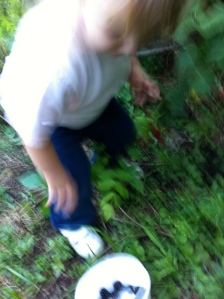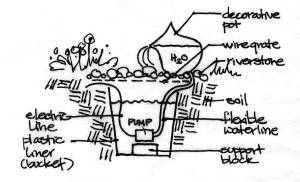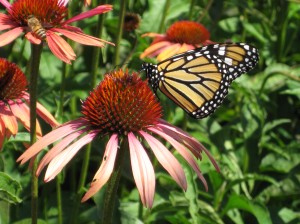When asked what plant was essential in a garden, a majority of children said “an apple tree.” What you need to create the perfect outdoor space for children includes some pretty simple elements. Open space for running, plants they can interact with, water to touch, taste and splash in, and lots of fun, kid-scale elements to engage all of their senses.
Gardening teaches kids independence, responsibility, good stewardship, and gives them experience working with grandparents, siblings and others in family and community. Studies have shown that kids’ minds learn best when they spend time outdoors in a natural environment. Involve your children in planning the garden, constructing its elements, and maintaining them throughout the seasons. Make sure tools are kid-sized.
Fun activities in the garden might include catching fireflies, listening for crickets, or searching for slugs or butterfly eggs. It is important not to spray pesticides in a kid’s garden, since most are toxic, and children learn as much from the critters there as they do from the plants they grow.
If you do grow vegetables, consider giving the plantings a theme. For instance, plant a pizza garden with easy to grow basil, tomatoes and oregano. Or create a pumpkin patch, and plan to carve as many pumpkins as you grow, then research good recipes for toasting the seeds. Maybe plant a cut flower garden in a striped pattern, with blossoms in every color of the rainbow.
Other elements to include that will capture the imagination include vine teepees (whether grapes, beans, peas or flowers), sunflower forts, strawberry pot towers (paint several different size pots each a different color, stack with the largest on the bottom, with enough room on each layer for strawberries to hang over the edges), and watering hoses painted like snakes.

Picking blackberries in August. Some go in the bucket, some go in the mouth, some get fed to the bunnies…









